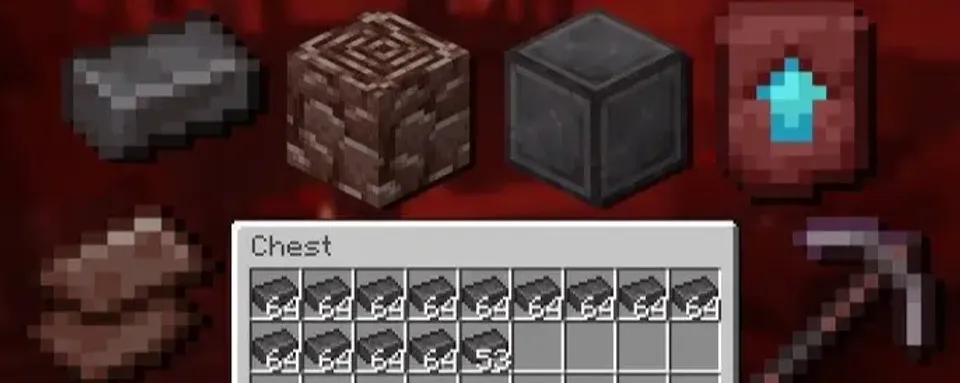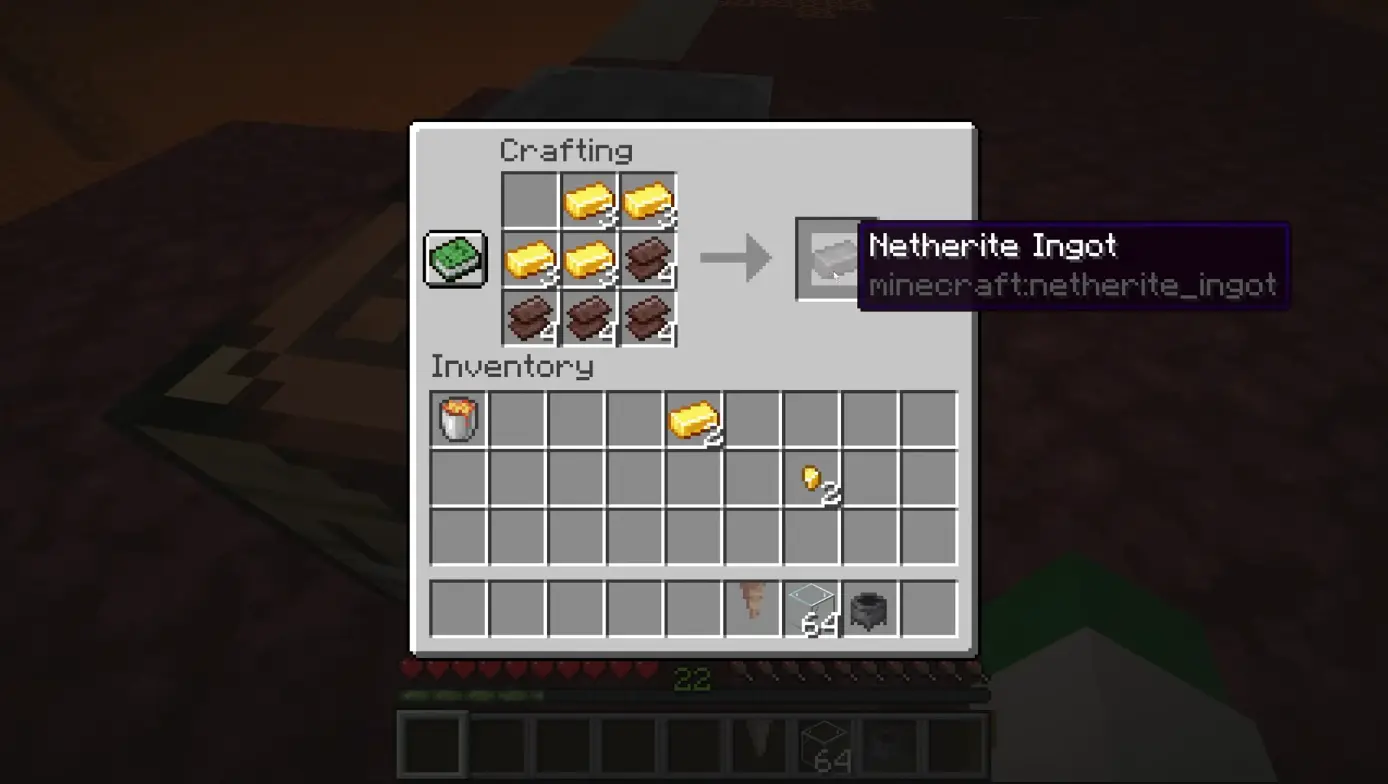
Minecraft features a variety of resources, some of which are used to craft tools, gear, and weapons. One of the best but rare resources in the game is Netherite. In this guide, you'll learn how to find Netherite in Minecraft.
What is Netherite?
Netherite is a resource used to upgrade diamond gear, making it stronger and more durable. It provides increased toughness, greater durability, and knockback resistance.
Netherite tools also offer higher efficiency and inflict more damage compared to items made from other materials, making Netherite tools the best in the game. Additionally, Netherite items are fireproof; if they fall into lava, they won't disappear!

How to Obtain Netherite?
You cannot obtain Minecraft Netherite directly like other resources (gold, diamond, etc.). Instead, you should find ancient debris, smelt them into Netherite scrap, and combine them with gold to create Netherite ingots. Only then can they be used for crafting.
However, the difficulty of obtaining this resource doesn't end there, as ancient debris can only be found in a specific area — the Nether, and they can only be mined with a Netherite or diamond pickaxe.
Step 1: Where to Find Netherite
To set out for ancient debris, you should prepare in advance to make the gathering process easier. For this, you'll need specific gear items that will ease your time in the Nether, provide additional protection from dangers, or facilitate resource extraction.
| Item | Purpose |
|---|---|
| Diamond or Netherite Pickaxe | Only these can mine ancient debris |
| Fire Resistance Potion | For protection from lava |
| Beds or TNT | For explosive mining – explained below |
| Enough food | To survive in the dangerous Nether |
| Blocks (e.g., cobblestone) | For building barriers |
| Gold armor | So that Piglins won’t attack you |
| Additional tools: | |
| Shulker Box | To increase inventory space |
| Ender Chest | For safe storage of valuable items |
These items will come in handy in the Nether dimension, as there are plenty of dangerous enemies and phenomena like fire and lava. Tools and bed explosives will be useful for directly mining ancient debris, while blocks will allow you to create protective barriers.
Step 2: Where to Find Ancient Debris
To ease navigation in searching for ancient debris for Minevraft Netherite, we recommend focusing on the following mining depth coordinates.
- Optimal height level: Y-level 14-16 ( the best level for Netherite)
- Generation layers: Between Y-levels 8 and 22
- Rarity: Debris appears in veins of 1–3 blocks, making them relatively rare.
To check your Y-level in Minecraft, press F3 (in the Java Edition) or enable the coordinate display in the game settings (in the Bedrock Edition).

Step 3: Netherite Mining Techniques
Even knowing the approximate areas of ancient debris locations, finding them with just a pickaxe will be not so much difficult, but time-consuming. Therefore, we propose the following strategies for exploring and mining more blocks.
Branch Mining Method
A very traditional and safest method, although time-consuming. For this, you need to descend to Y-level 15 in the Nether. Then create a 2x1 tunnel and branch out every 4 blocks. Explore each branch until you find the required resource.

Blast Method
With explosives, you can quickly destroy a large number of blocks, making the search for ancient debris easier. For this, you can use TNT by placing it at intervals of every 3-4 blocks on Y-level 15. Ignite it and collect the required resources.

Beds may also be used for this purpose because beds explode in the Nether as soon as you try to sleep in them. However, this method is dangerous as you could injure or kill yourself with the explosion if you don't move back far enough.
The benefit of this method is that ancient debris is not destroyed by explosions, so you don't have to worry about this.

Step 4: Smelting Ancient Debris into Netherite Scrap
Once you gather ancient debris, you can smelt it into the needed Netherite scrap for future crafting. To do this, place the ancient debris in a furnace, using coal or other fuel to smelt it. Each block of debris will give you one Netherite Minecraft scrap.

Step 5: How to make Netherite
Once you obtain Netherite scrap, you can create ingots from it, which will be used for crafting tools and improving armor from this type of resource. For this, place 4 units of Netherite scrap and 4 gold ingots in the crafting table, resulting in a Netherite ingot.


Tips for Effective Netherite Searching
- Use fire resistance potions to avoid death in lava lakes.
- Piglin brutes won't attack you if you're wearing at least one gold armor piece.
- Carry a respawn anchor with you to set your spawn point in the Nether.
- Enchant your pickaxe for efficiency to mine faster.
- Do not dig straight down — lava lakes are frequent in the Nether.
Exploring the Bastion
There's another way to acquire ancient debris, Netherite scrap, or even whole Netherite ingots. For this, you need to explore the Nether, particularly the remains of Bastions, and loot the chests found there. These often contain the resources you need. However, this requires good gear to withstand enemies and local dangers.

What is the Best Method for Mining Ancient Debris?
It's best to use TNT to instantly destroy many blocks and increase the chances of finding ancient debris.

Can Enemies Destroy Netherite?
No, enemies and phenomena like lava, fire, or explosions can't destroy Netherite, so you can safely mine it or leave it on the ground.
Which is Better: Diamond or Netherite Items?
Netherite items are the most durable, making them better than gold or diamond items.
Conclusion
Now you know how to get Netherite in Minecraft, enabling you to craft better gear: armor, tools, and weapons for your character. This weapon will be the strongest in the game, lasting longer than diamond ones. Obtaining Netherite isn't particularly difficult, but time-consuming because you generally acquire it in small amounts.







No comments yet! Be the first one to react